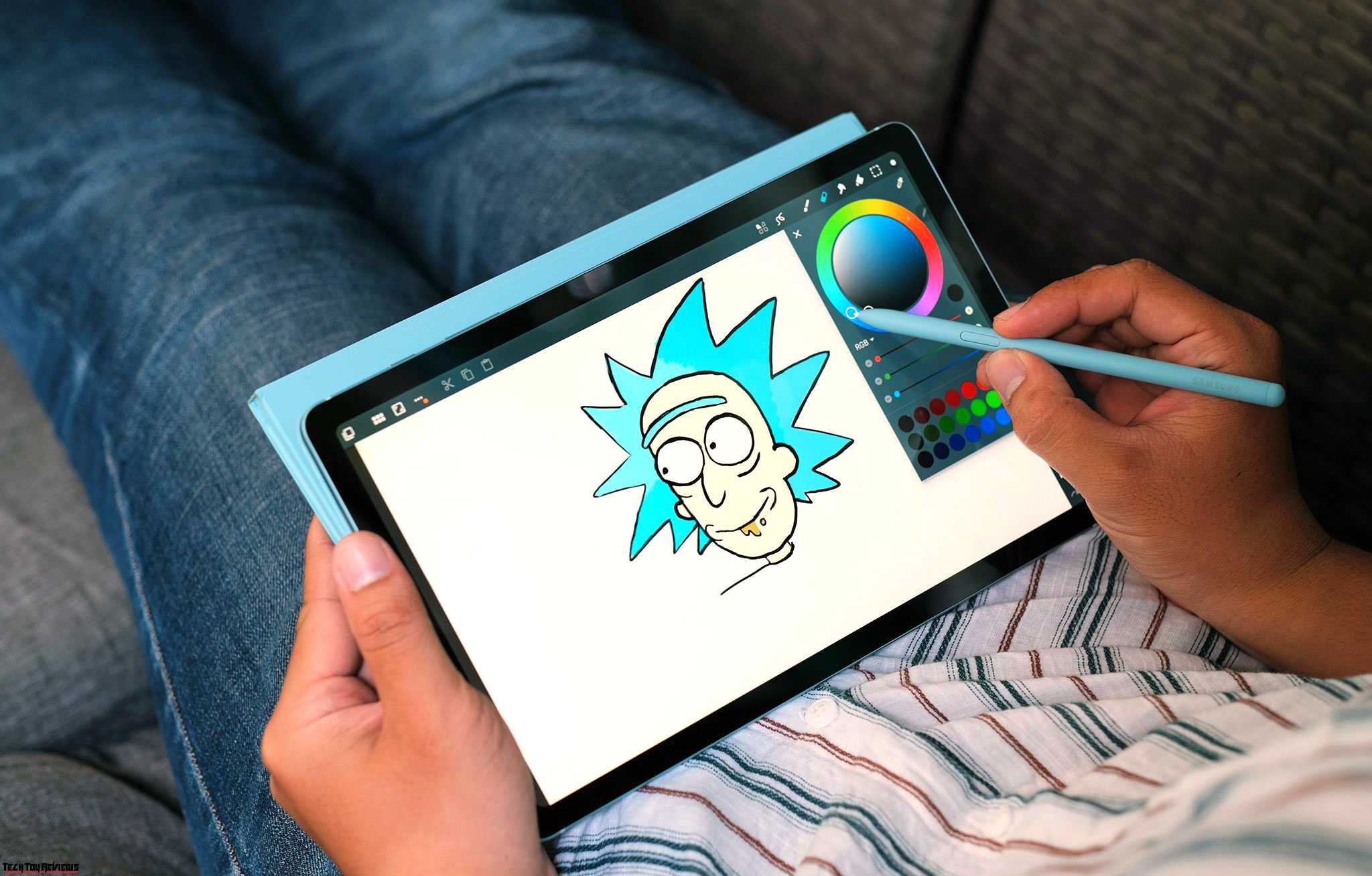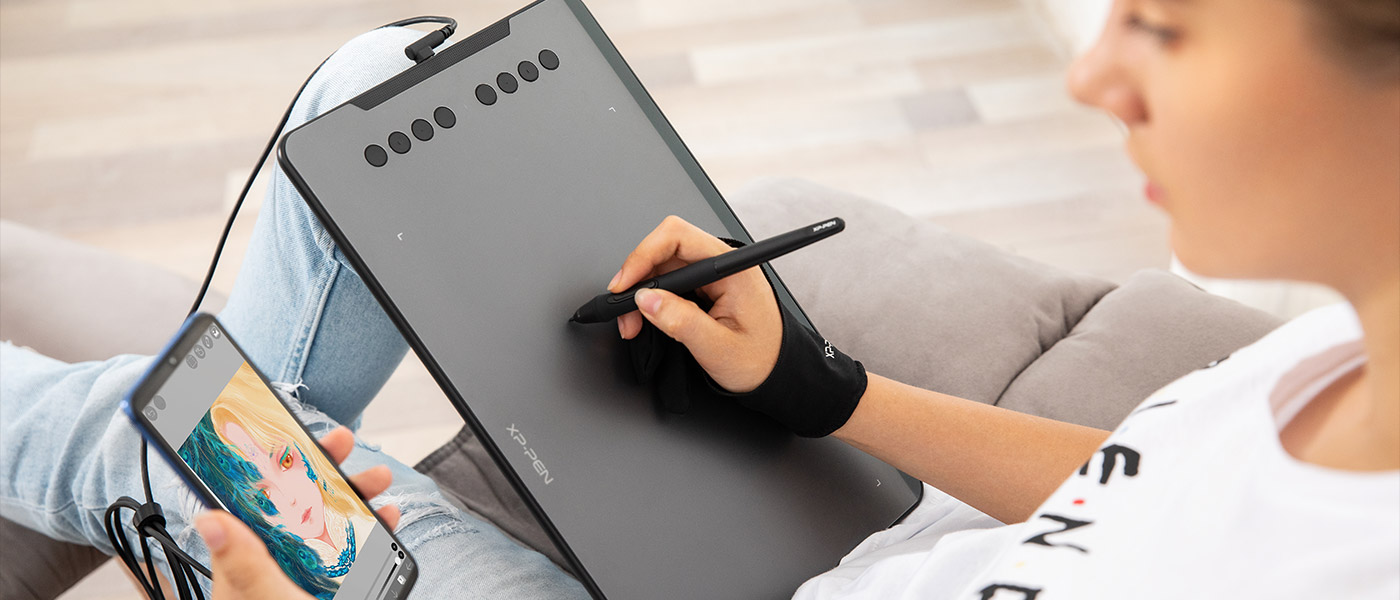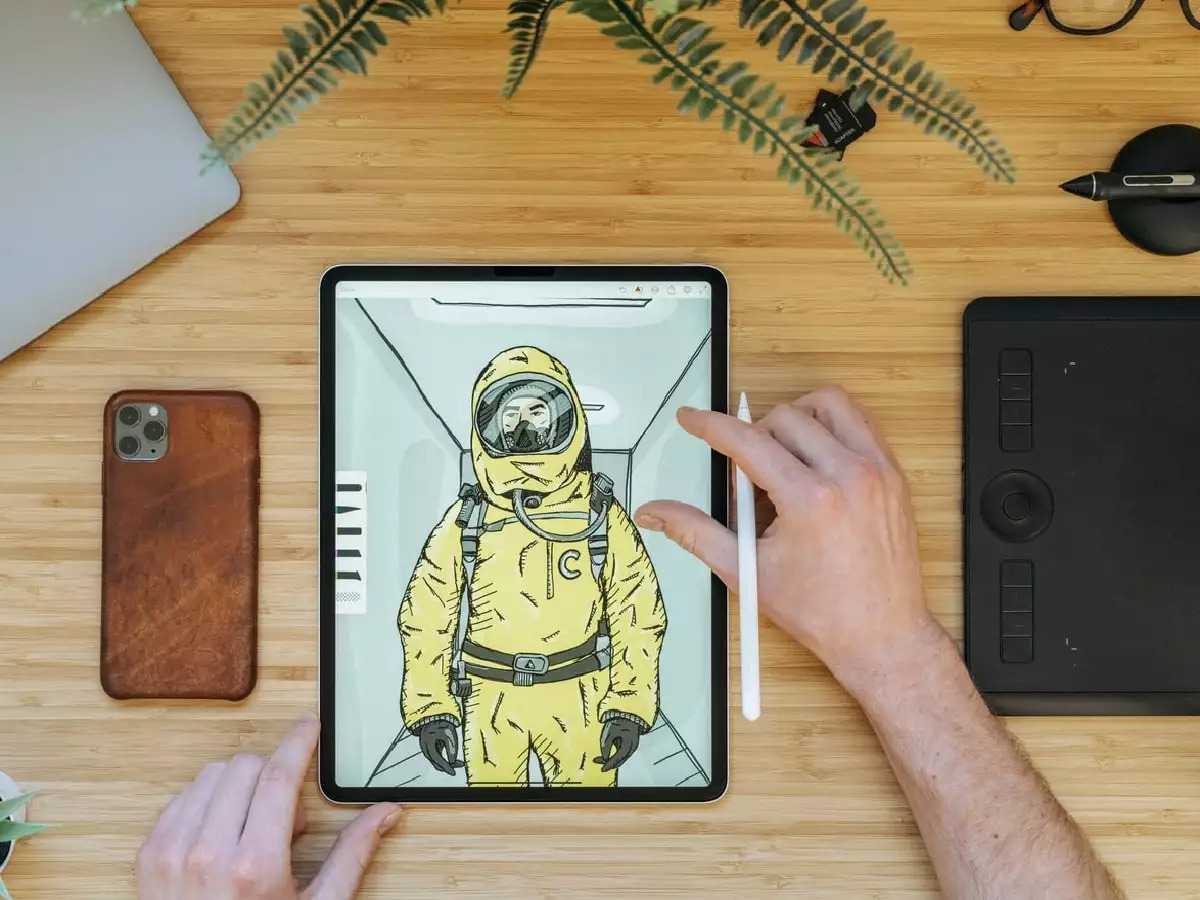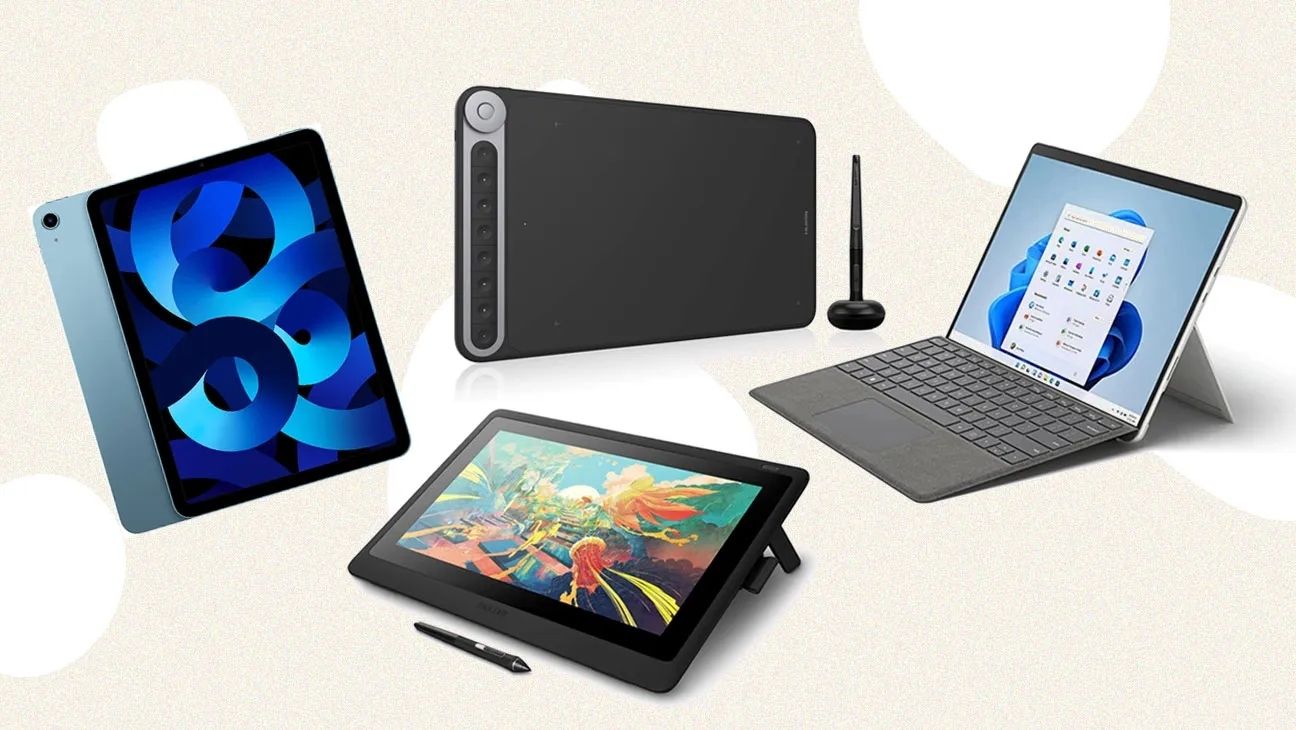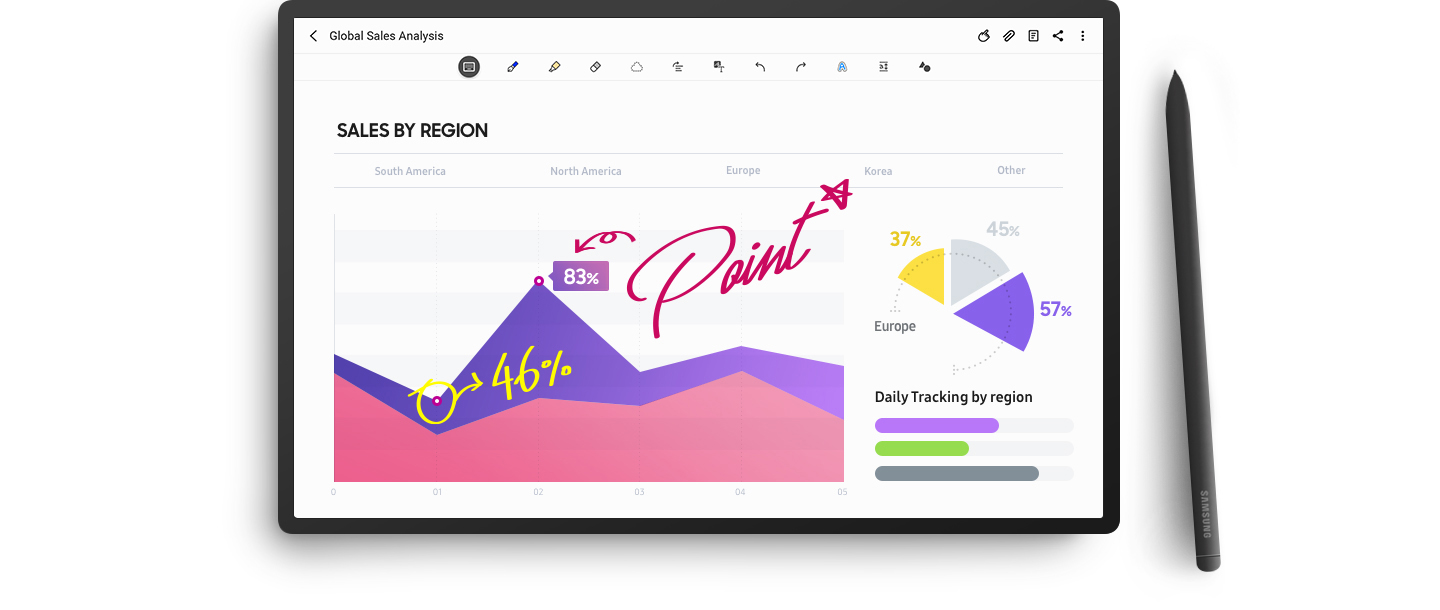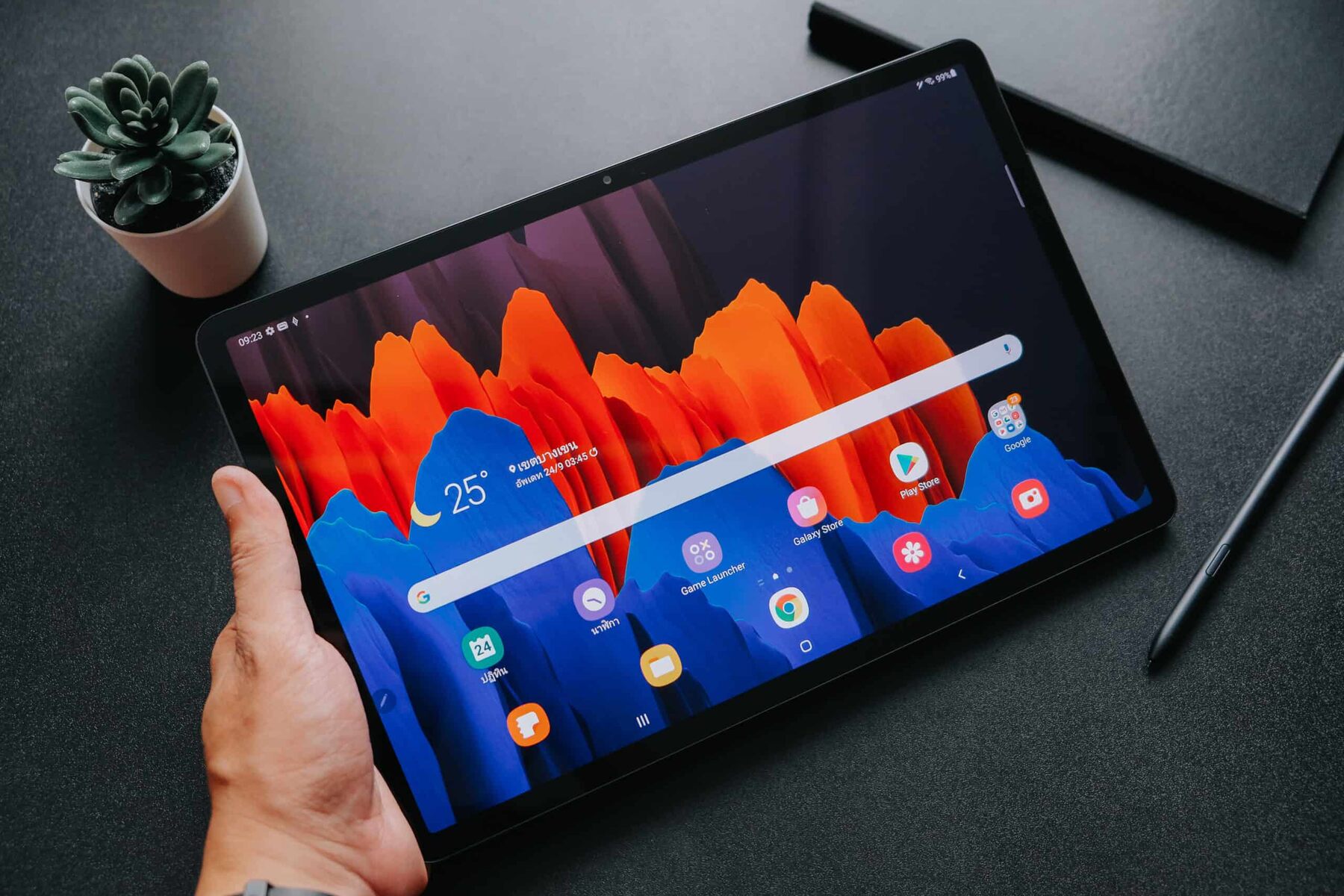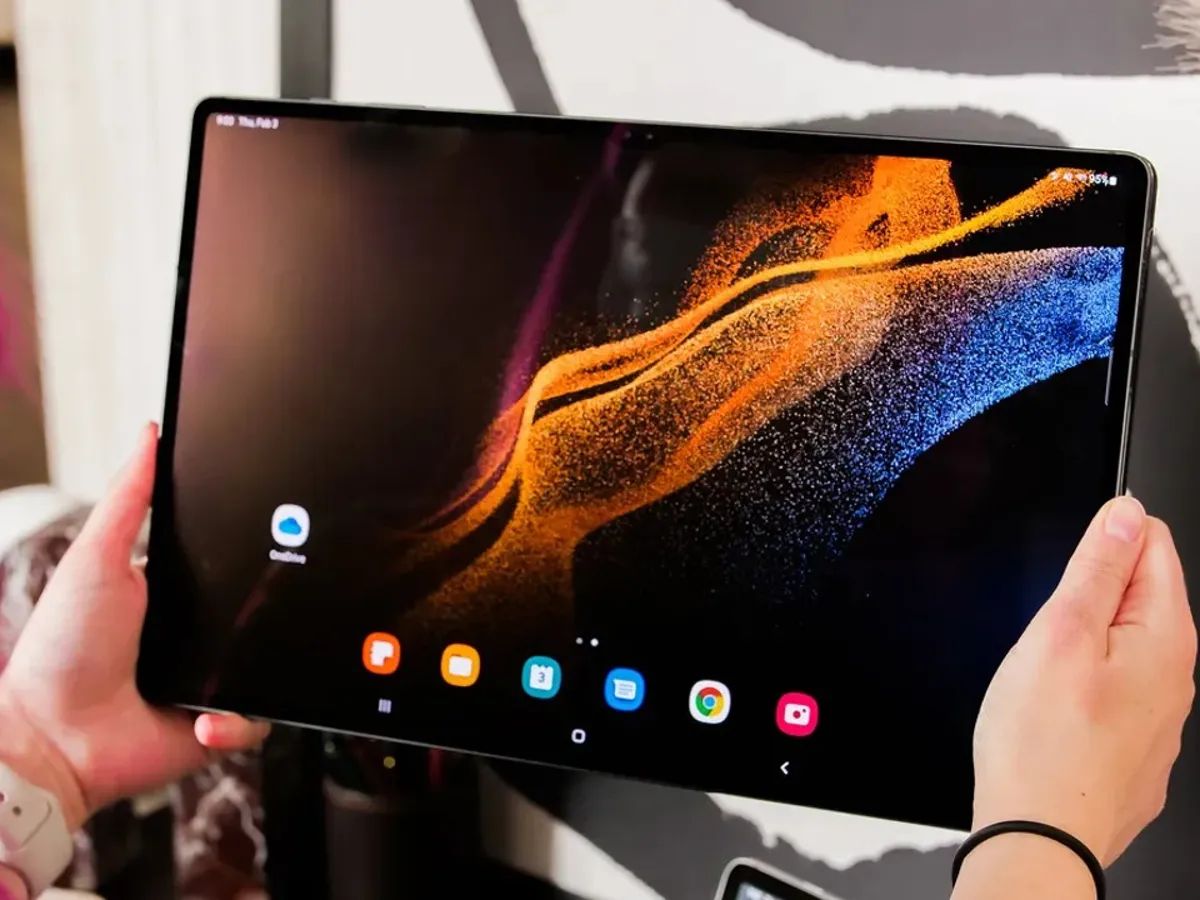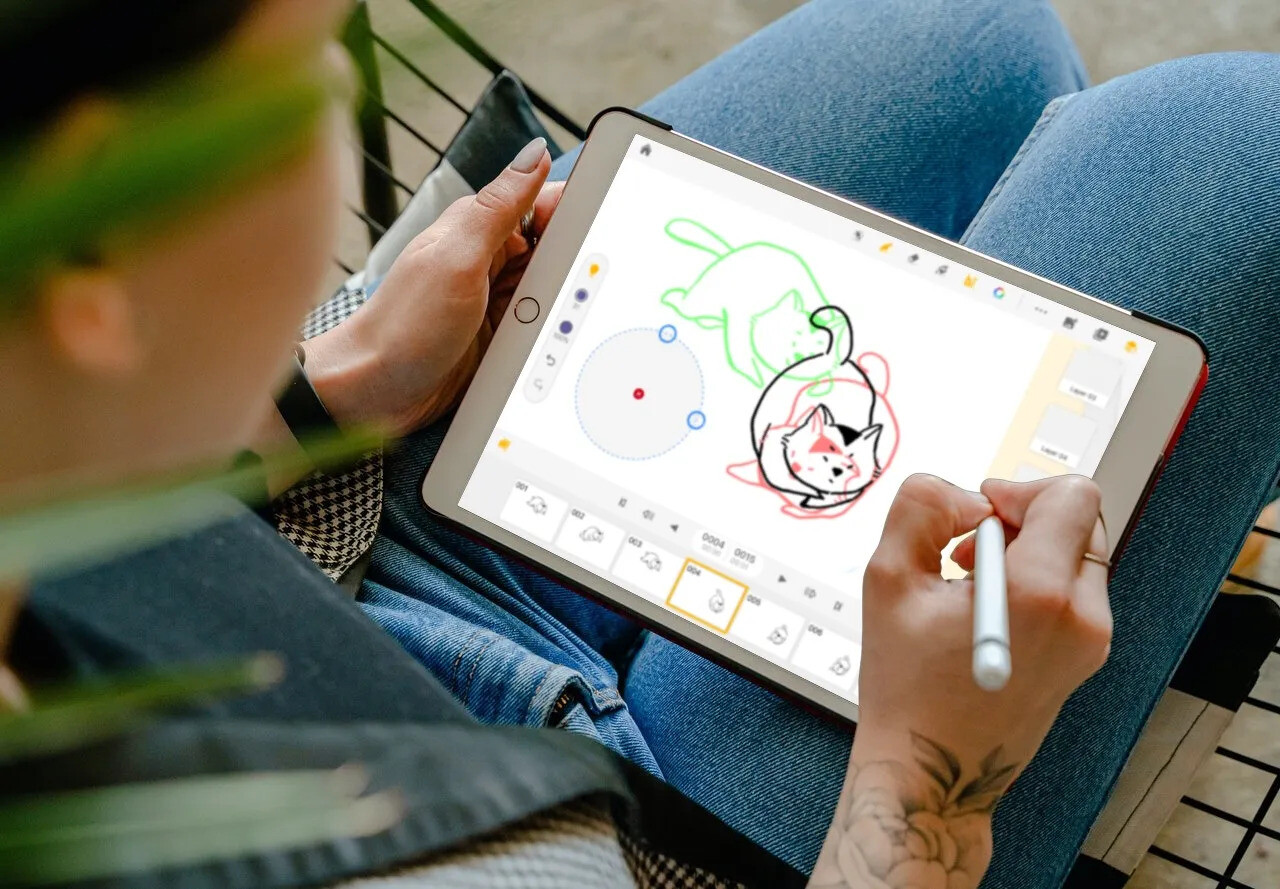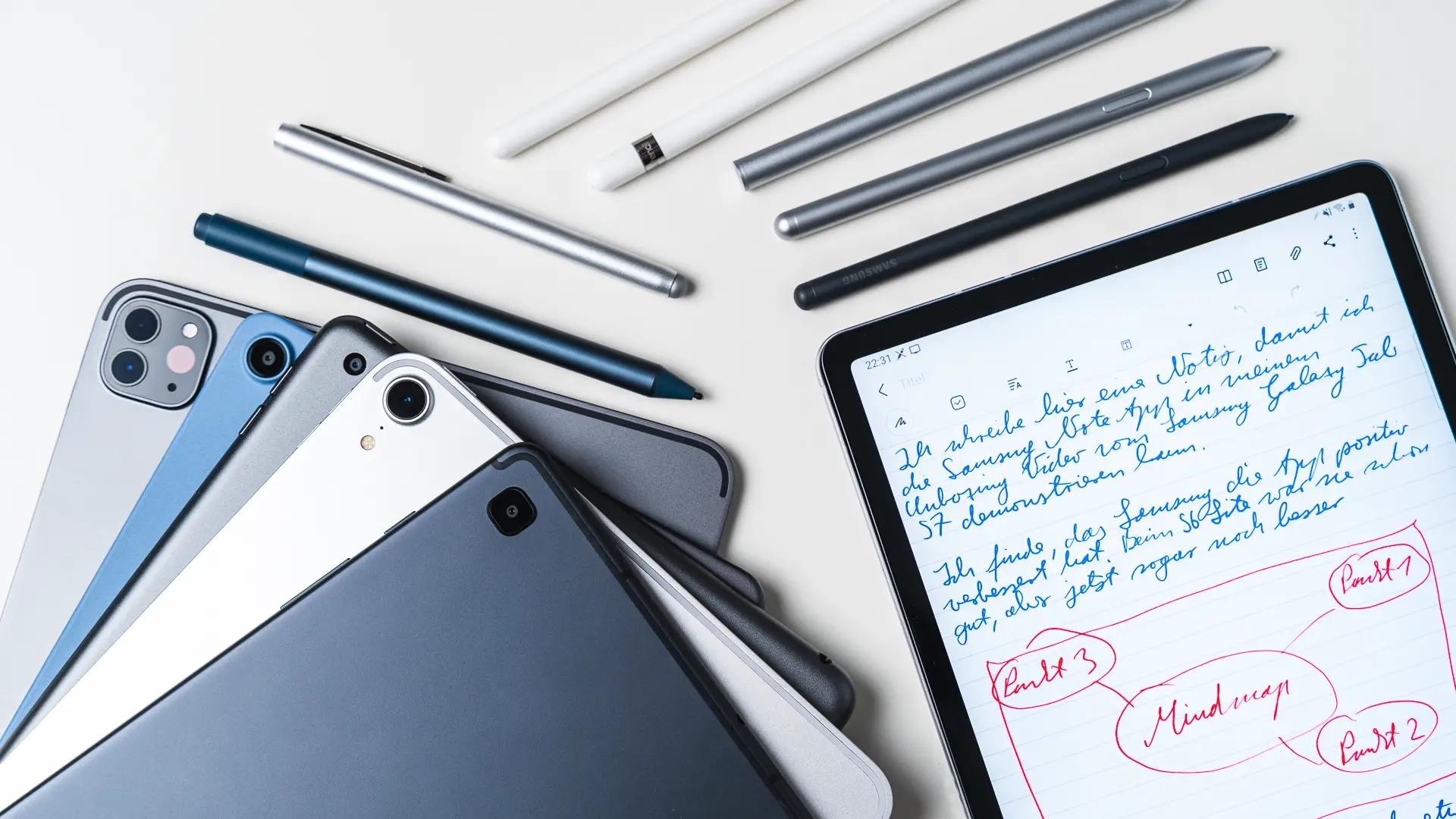Introduction
The Samsung tablet is a versatile device that allows users to not only consume media but also engage in creative activities such as drawing. With its high-resolution display and responsive touchscreen, the Samsung tablet provides an excellent platform for digital art. Whether you’re a professional artist or just starting out, learning how to draw on a Samsung tablet can open up a world of artistic possibilities.
In this article, we will explore the tools, techniques, and tips you need to create stunning artwork on your Samsung tablet. We will cover everything from choosing the right drawing app to mastering basic and advanced drawing techniques. Additionally, we will provide troubleshooting tips to help you overcome common issues and enhance your drawing experience.
Whether you enjoy sketching, painting, or creating intricate designs, the Samsung tablet offers a range of features that can help bring your artistic vision to life. By leveraging the power of digital technology, you can easily experiment with different styles, colors, and textures without worrying about wasting paper or paints.
Creating digital art on a Samsung tablet also provides the convenience of mobility. You can take your tablet with you wherever you go, allowing you to draw inspiration from your surroundings and capture fascinating moments in real-time. Whether you’re sitting in a coffee shop or exploring a natural landscape, the Samsung tablet offers the flexibility to express your creativity anytime, anywhere.
So, if you’re ready to dive into the world of digital art with your Samsung tablet, let’s get started! Grab your stylus or use your finger, and discover the joy of creating beautiful artwork in a digital medium.
Tools and Materials Needed
To start drawing on your Samsung tablet, there are a few essential tools and materials you will need:
- Samsung Tablet: Choose a Samsung tablet that suits your preferences and budget. Consider factors such as screen size, resolution, and stylus compatibility. Some popular models include the Samsung Galaxy Tab S7, Tab S6, and Tab S5e.
- Stylus or Digital Pen: While some Samsung tablets come with a built-in stylus, others require you to purchase one separately. A stylus or digital pen allows for more precise drawing and mimics the experience of using a traditional pen or pencil.
- Drawing App: Install a drawing app on your Samsung tablet to unleash its creative potential. There are several options available, ranging from basic sketching apps to feature-rich software like Adobe Photoshop or Procreate.
- Screen Protector: Invest in a high-quality screen protector to protect your tablet’s display from scratches. Opt for a screen protector that provides a natural pen-like feel and minimizes glare.
- Storage: Depending on your preference, you may want to consider expanding your tablet’s storage capacity with a microSD card. This allows you to store a larger number of drawings and art files without worrying about running out of space.
- Additional Accessories: Optional accessories such as a tablet stand, carrying case, and USB adapter can enhance your drawing experience and provide added convenience when working on your Samsung tablet.
Having these tools and materials ready will ensure that you have everything you need to create stunning artwork on your Samsung tablet. Remember to research and choose the right tablet and accessories that meet your specific requirements and artistic goals. With the right tools in hand, you can fully immerse yourself in the world of digital art and unleash your creativity.
Getting Started
Once you have gathered the necessary tools and materials, it’s time to get started with drawing on your Samsung tablet. Follow these steps to begin your creative journey:
- Set Up Your Tablet: Power on your Samsung tablet and make sure it is fully charged. If you have a separate stylus, ensure that it is charged or has fresh batteries. Adjust the tablet’s display settings to your liking, such as brightness and color temperature.
- Choose Your Drawing App: Open the app store on your Samsung tablet and search for drawing apps. Explore different options and read user reviews to find an app that suits your style and preferences. Download and install the app onto your device.
- Explore the App: Once the drawing app is installed, take some time to familiarize yourself with its interface and features. Experiment with the different brushes, colors, and tools available. Many drawing apps offer tutorials within the app or online resources to help you get started.
- Practice Basic Techniques: Begin by practicing basic drawing techniques, such as drawing straight lines, curves, and basic shapes. This will help you develop control and precision with your stylus or finger. Experiment with different pressures and strokes to see how the app responds.
- Sketch Freely: Start by sketching simple subjects or objects that interest you. It could be a flower, a cup, or even a portrait of a family member. The goal here is to let go of any self-doubt and have fun exploring the capabilities of your tablet and the drawing app.
- Experiment with Layers: Drawing apps often support layers, which allow you to work on different aspects of your artwork separately. Experiment with creating new layers, adjusting their opacity, and trying different blending modes to add depth and complexity to your drawings.
- Take Breaks: Remember to take regular breaks while drawing on your Samsung tablet. Prolonged periods of screen time can strain your eyes and affect your concentration. Take short breaks every 30 minutes to rest your eyes and stretch your muscles.
By following these steps and practicing regularly, you will gradually become familiar with the process of drawing on your Samsung tablet. Don’t be afraid to experiment, make mistakes, and learn from them. With time and practice, you will improve your skills and develop a unique artistic style.
Choosing the Right Drawing App
When it comes to drawing on your Samsung tablet, choosing the right drawing app is crucial. The app you select will greatly impact your drawing experience and the range of features at your disposal. Here are a few key considerations to keep in mind when choosing a drawing app:
- Features: Look for a drawing app that offers a wide range of features to suit your artistic needs. Some essential features to consider include various brush types, layer support, blending modes, and customizable settings. Additionally, advanced features like symmetry tools, perspective grids, and image import/export functionalities can further enhance your creative possibilities.
- User Interface: Consider the app’s user interface and how intuitive it is to navigate. A clean and well-organized interface can make it easier for you to access the tools and features you need, allowing you to focus more on your artwork rather than navigating through complex menus.
- Compatibility: Ensure that the drawing app you choose is compatible with your Samsung tablet’s operating system. Check the app’s system requirements to make sure it is supported. Additionally, consider whether the app supports pressure sensitivity if you are using a stylus.
- Community and Support: Research the drawing app’s user community and support resources. Look for apps that have an active community of artists who share their work, tips, and tutorials. Additionally, check if the app provides support services like forums, FAQs, or direct contact with the app developers in case you encounter any issues or have questions.
- Cost: Determine your budget for a drawing app. Some apps offer basic functionalities for free, while others require a one-time purchase or a subscription. Consider your needs and the value you will get from the app to determine if it is worth the cost.
- Try Before Committing: If possible, try out a free version or trial version of the drawing app before committing to a purchase or subscription. This allows you to test the app’s interface, features, and overall suitability for your drawing style.
Remember that finding the perfect drawing app may require some trial and error. It’s essential to choose an app that aligns with your artistic goals and preferences. Don’t hesitate to experiment with different apps until you find one that feels comfortable and enhances your creative process on your Samsung tablet.
Basic Drawing Techniques
Mastering basic drawing techniques is essential to create well-defined and proportionate artwork on your Samsung tablet. By understanding these foundational techniques, you can improve your skills and confidently progress to more complex drawings. Here are some basic drawing techniques to get you started:
- Line Drawing: Practice drawing straight lines, curved lines, and various line weights. Experiment with light and heavy pressure to create thin and thick lines, conveying different textures and shapes.
- Shape and Form: Learn to observe and recreate basic shapes with precision. Start with simple geometric shapes like circles, squares, and triangles, and gradually progress to more complex forms like cylinders, cubes, and spheres.
- Value and Shading: Understand how light and shadow interact to give your drawings a three-dimensional appearance. Practice shading techniques such as hatching, cross-hatching, and blending to create realistic or stylized shading effects.
- Proportions and Perspective: Study the proportions of human figures, objects, and landscapes. Learn about the rules of perspective and how to represent depth and distance in your drawings. Practice drawing objects from different angles to improve your understanding of perspective.
- Textures and Patterns: Experiment with creating various textures and patterns to add visual interest to your artwork. Practice techniques such as stippling (using dots), cross-lines, and hatching to create different surface textures.
- Composition and Balance: Consider the arrangement and placement of your subjects within the frame of your drawing. Learn about principles of composition such as the rule of thirds, leading lines, and focal points to create visually appealing and well-balanced drawings.
- Observation and Practice: Cultivate the habit of observing your surroundings and practicing drawing from life. Pay attention to details, proportions, and lighting conditions. Regular practice will help refine your observation skills and improve your ability to capture what you see.
Remember that mastering these basic drawing techniques takes time and practice. Don’t be discouraged if your early attempts don’t meet your expectations. With dedication and persistence, you will improve your skills and develop your own unique style. Take advantage of the digital environment by experimenting with different brushes, colors, and layering techniques to further enhance your drawings on your Samsung tablet.
Advanced Drawing Techniques
Once you have a solid grasp of the basic drawing techniques, you can begin exploring more advanced techniques to take your artwork on your Samsung tablet to the next level. These techniques can add depth, realism, and complexity to your drawings. Here are some advanced drawing techniques to consider:
- Layering and Blending Modes: Utilize the layering feature in your drawing app to build up complex compositions. Experiment with different blending modes to create interesting effects and seamlessly blend colors and textures.
- Detailing and Texturing: Pay close attention to details and textures in your drawings. Use smaller brushes and precise strokes to add intricate details such as hair, fur, or intricate patterns. Experiment with texture brushes to create realistic or stylized textures.
- Color Theory: Deepen your understanding of color theory and learn how to use colors effectively in your drawings. Explore concepts such as color harmony, complementary colors, and creating mood through color. Use the color picker tool in your app to select and experiment with different colors.
- Light and Shadow: Study the play of light and shadow and how it interacts with objects. Learn about different lighting situations, such as direct light, diffused light, and ambient light, and observe how they shape objects and create highlights and shadows.
- Gesture and Figure Drawing: Practice capturing the essence of the human figure through gesture drawing. Gesture drawing helps you quickly and loosely sketch the movement and overall form of the figure. Study anatomy and proportions to refine your figure drawing skills.
- Composition Experimentation: Push the boundaries of composition by experimenting with unconventional or dynamic compositions. Explore asymmetry, dramatic angles, and unusual perspectives to create visually impactful and evocative drawings.
- Mixed Media Exploration: Mix digital drawing with other traditional media or techniques. Combine scanned textures, photographs, or hand-drawn elements with your digital drawings to add layers of depth and complexity.
- Dramatic Lighting: Create impactful and moody drawings by focusing on dramatic lighting. Experiment with strong contrast, shadows, and highlights to add a sense of drama and intensity to your artwork.
Remember, advanced drawing techniques require patience and practice. Take the time to study different artists and styles that inspire you, and try to incorporate elements of their work into your own drawings. Don’t be afraid to experiment, take risks, and push yourself out of your comfort zone. Embrace the digital nature of your Samsung tablet by exploring various tools, brushes, and effects to achieve the desired artistic outcome.
Tips for Creating Realistic Artwork
Creating realistic artwork on your Samsung tablet requires attention to detail, observation skills, and practice. Whether you’re drawing landscapes, portraits, or still life, these tips will help you achieve a realistic effect in your artwork:
- Study References: Use reference photos or real-life objects to study the subject you want to draw. Pay close attention to the finer details, textures, and lighting conditions. This will help you accurately represent the subject in your drawing.
- Observe Lighting and Shadows: Understand how light falls on objects and how shadows are cast. Study the different types of light sources and how they affect the appearance of form and texture. Accurately rendering light and shadows is crucial for creating a realistic three-dimensional effect in your artwork.
- Focus on Values: Pay attention to the range of values in your artwork. Understand how to translate colors into shades of gray to create a sense of depth and dimension. Practice accurately depicting the values in your subjects to give your drawings a realistic appearance.
- Blend and Gradate: Experiment with blending and gradation techniques to create smooth transitions and soft edges. Use blending brushes or your stylus to gently blend colors and values together. This can help create a more seamless and realistic effect in your artwork.
- Details Matter: Pay attention to the small details that make a realistic artwork stand out. Focus on capturing intricate textures, subtle variations in color and value, and fine lines or features. Taking the time to include these details will elevate the realism of your artwork.
- Study Anatomy: If you’re drawing figures or portraits, studying anatomy is essential. Understand the basic anatomical structures of the human body, such as bones, muscles, and proportions. This will help you accurately depict the human form in your artwork.
- Use Layering Techniques: Utilize the layering feature in your drawing app to build up layers of colors and values. This allows you to add depth and complexity to your artwork. Start with broad strokes and gradually refine details on separate layers to maintain flexibility and make adjustments as needed.
- Experiment with Brushes and Textures: Play around with different brush styles and textures in your drawing app. Experiment with brushes that mimic traditional media, such as pencil or oil brushes. This can help add realism and texture to your artwork.
- Take Breaks and Gain Perspective: It’s easy to get absorbed in the minutiae of creating a realistic piece of artwork. Take breaks and step away from your drawing to gain fresh perspective. This will allow you to assess your drawing objectively and make any necessary adjustments.
- Practice, Practice, Practice: Developing realistic drawing skills takes time and practice. Set aside dedicated time to draw regularly and challenge yourself with new subjects and techniques. The more you practice, the more confident you will become in capturing realistic details and qualities in your artwork.
Remember, creating realistic artwork is a continuous learning process. It’s okay to make mistakes and iterate on your techniques. Embrace the journey of honing your skills and enjoy the satisfaction of seeing your artwork become more and more realistic over time.
Customizing Your Drawing Experience
Customizing your drawing experience on your Samsung tablet allows you to personalize your workflow and optimize your creativity. By exploring customization options, you can tailor your digital art environment to suit your preferences and enhance your overall drawing experience. Here are some ways to customize your drawing experience:
- Customize Brush Settings: Experiment with the brush settings in your drawing app to create brushes that suit your style. Adjust parameters such as size, opacity, flow, and texture to achieve the desired effect. Save your customized brushes to easily access them for future projects.
- Create Custom Color Palettes: Take advantage of the color selection feature in your drawing app to create custom color palettes. Organize colors that you frequently use or create specific palettes for different styles or themes. Having a personalized color palette can speed up your workflow and ensure consistency in your artwork.
- Set Custom Shortcuts: Explore the shortcut or gesture options in your drawing app to assign custom actions to specific tools or functions. This can help streamline your workflow and make it more efficient. For example, you can assign a specific shortcut to switch between different brushes or toggle the visibility of layers.
- Adjust Pressure Sensitivity: If you’re using a tablet stylus with pressure sensitivity, experiment with the pressure settings in your drawing app. Fine-tune the sensitivity to match your preferred drawing style and the pressure levels that feel most comfortable for you.
- Use Templates and Custom Canvases: Many drawing apps offer pre-made templates or allow you to create custom canvases with specific dimensions or ratios. Customize your canvas size, resolution, and background color to fit your project requirements.
- Organize Your Workspace: Arrange the tools and panels in your drawing app’s interface to create a workspace that suits your workflow. Rearrange panels, hide or expose certain tools, and create custom layouts that maximize your efficiency and minimize distractions.
- Import and Export Custom Brushes and Textures: Some drawing apps allow you to import custom brushes or textures created by other artists or downloaded from online resources. Explore and experiment with different brushes and textures to find those that align with your artistic vision.
- Personalize the User Interface: Customize the look and feel of your user interface by adjusting themes, color schemes, or widget placement. A visually appealing interface can enhance your mood and creativity while working on your Samsung tablet.
- Back Up Your Artwork: Regularly back up your artwork to avoid losing your creations. Whether to an external drive, cloud storage, or even printing your drawings, having multiple copies of your artwork ensures its safety and allows for future reference or sharing.
- Seek Inspiration and Feedback: Customize your drawing experience by seeking inspiration from other artists, joining online communities, or participating in art challenges. Engaging with other artists can provide valuable insights and feedback, and motivate you to continue improving your skills.
Remember, the purpose of customizing your drawing experience on your Samsung tablet is to create a space that inspires and supports your creativity. Take the time to explore and experiment with different customization options, finding what works best for you. The more you personalize your drawing experience, the more comfortable and enjoyable it becomes.
Sharing Your Drawings
Sharing your drawings with others allows you to showcase your talent, gain feedback, and connect with a wider audience of fellow artists and art enthusiasts. With your Samsung tablet, you have various options for sharing your artwork and getting it noticed. Here are some ways to share your drawings:
- Social Media Platforms: Share your artwork on popular social media platforms like Instagram, Facebook, or Twitter. Create an artist profile or use relevant hashtags to reach a wider audience of art enthusiasts. Engage with the art community by following, liking, and commenting on other artists’ work to build connections and gain exposure.
- Online Art Communities: Join online art communities, forums, or galleries that focus on digital art. These platforms provide dedicated spaces for artists to showcase their work, receive critique, and engage in discussions with like-minded individuals. Some popular art communities include DeviantArt and Behance.
- Create a Portfolio Website: Build your own portfolio website to exhibit your artwork and provide a professional online presence. Include a gallery of your best work, an about section, and contact information. Update your website regularly with new drawings and share it with your network to attract potential clients or collaborators.
- Participate in Art Contests and Exhibitions: Look for local or online art contests and exhibitions where you can submit your artwork for a chance to win prizes or have your work displayed. Participating in these events can provide exposure and networking opportunities within the art community.
- Collaborate with Other Artists: Collaborate with other artists on joint projects or themed artwork. This allows you to tap into different perspectives and styles, expanding your artistic horizons and exposing your work to new audiences.
- Print and Sell Your Artwork: Consider printing your artwork on merchandise like prints, posters, or even clothing. Set up an online store or use platforms like Etsy or Redbubble to sell your art to a global audience. Promote your store through your social media networks and engage with customers to build a loyal following.
- Participate in Art Challenges and Prompts: Engage in art challenges or prompts on social media platforms. These challenges provide a theme or prompt for a certain period, encouraging artists to create and share their interpretations of the theme. Participating in these challenges can help you gain exposure and connect with other artists.
- Attend Local Art Events: Participate in local art fairs, exhibitions, or workshops to showcase your artwork within your community. These events provide opportunities to network with other artists, art enthusiasts, and potential clients or buyers.
- Engage with Your Audience: Respond to comments and messages from your audience, and genuinely connect with other artists and art enthusiasts. Build relationships and support networks within the art community by offering feedback, sharing knowledge, and engaging in meaningful conversations.
- Document Your Artistic Process: Take advantage of the digital medium to document and share your artistic process. Record time-lapse videos, create tutorials, or share behind-the-scenes glimpses of your workflow. This not only provides valuable content for your followers but also gives them insight into your creative journey.
Remember, sharing your drawings is an opportunity to express yourself, grow as an artist, and connect with a wider community. Embrace the feedback and support you receive while staying true to your artistic vision. Utilize the digital tools and platforms available to you through your Samsung tablet to share your artwork with the world and create meaningful connections with fellow artists and art enthusiasts.
Troubleshooting Common Issues
While drawing on your Samsung tablet can be an enjoyable experience, you may encounter some common issues along the way. Fortunately, most of these issues have simple solutions. Here are some troubleshooting tips to help you overcome common problems:
- Unresponsive or Laggy Stylus: If your stylus is not responding or lagging, try replacing the battery or recharging it if applicable. Ensure that your stylus is compatible with your Samsung tablet. If the issue persists, check if there are any software updates available for your tablet or drawing app.
- App Crashing or Freezing: If your drawing app crashes or freezes frequently, make sure that your app and operating system are up to date. Clear the cache of your drawing app or try reinstalling it. If the problem persists, reach out to the app developer for support or consider using a different drawing app.
- Inaccurate Touch or Palm Rejection: If you experience inaccuracies with touch input or your palm accidentally registering while drawing, check your tablet’s touch sensitivity settings. Adjust the settings to minimize accidental touches or enable palm rejection features in your drawing app.
- Color Inconsistencies: If the colors in your digital drawing look different from what you intended, ensure that your tablet’s display settings are calibrated properly. Consider using color management tools or adjusting your drawing app’s color profile for accurate color representation. Additionally, be aware that colors may look different when viewed on different devices or when printed.
- Low Storage Space: If you’re running out of storage space on your tablet, consider transferring your drawings and artwork to an external storage device or cloud storage. Delete any unnecessary files or apps to free up space and ensure smooth performance.
- Difficulty with Precision and Control: If you’re having difficulty achieving precision and control with your stylus or finger, practice using different pressure levels and strokes. Experiment with the brush settings in your drawing app to find a configuration that suits your drawing style. Consider using a stylus with pressure sensitivity for more accurate control.
- Brush Lag or Stuttering: If you experience brush lag or stuttering when drawing, check if there are any background processes or apps running that may be affecting your tablet’s performance. Close unnecessary apps to free up resources. If the issue continues, try adjusting the brush settings such as brush size or opacity to reduce the workload on your tablet’s processor.
- Difficulty with Layer Management: If you find it challenging to manage multiple layers in your drawing app, take the time to understand the layer management tools and functionalities. Organize your layers into groups or folders to keep your artwork organized and easily editable. Consider naming or color-coding layers for better clarity.
- Backup and Data Loss: To avoid the risk of losing your artwork, regularly back up your drawings and files. Use cloud storage, external hard drives, or other backup solutions to ensure that your work is protected. Consider saving your work in multiple file formats to ensure compatibility and long-term access.
- Limited Battery Life: If your Samsung tablet’s battery drains quickly, optimize your tablet’s power settings. Adjust brightness, screen timeout, and other power-consuming settings to conserve battery. Consider using a tablet stand or external power source to minimize battery usage during long drawing sessions.
Remember, troubleshooting common issues is part of the learning process when it comes to drawing on your Samsung tablet. Don’t hesitate to seek help from online forums, communities, or the support resources provided by your tablet or drawing app manufacturer. With patience and persistence, you can overcome any challenges and fully enjoy the experience of drawing on your Samsung tablet.
Conclusion
Drawing on a Samsung tablet opens up a world of artistic possibilities. Whether you’re a professional artist or just starting out, the combination of a high-resolution display, responsive touchscreen, and versatile drawing apps allows you to create stunning digital artwork with ease. By following the tips and techniques outlined in this article, you can enhance your drawing skills and take your creativity to new heights.
From gathering the necessary tools and materials to customizing your drawing experience, every step plays a role in cultivating your artistic journey. Learning basic and advanced drawing techniques, exploring different brush styles, and experimenting with colors and textures will help you create realistic and captivating artwork on your Samsung tablet.
Sharing your drawings with others is an integral part of the artistic process. Whether it’s through social media platforms, online art communities, or local art events, sharing your artwork allows you to gain valuable feedback, connect with fellow artists, and build a supportive network in the art community.
While drawing on a Samsung tablet offers boundless creative opportunities, it’s important to remember that overcoming challenges is part of the learning process. Troubleshooting common issues, adapting to different techniques, and seeking inspiration will contribute to your growth as an artist.
Embrace the digital medium and take advantage of the features and customization options available on your Samsung tablet. Explore different drawing apps, experiment with brushes and textures, and have fun pushing the boundaries of your artistic expression.
So, grab your Samsung tablet, unleash your creativity, and start drawing! With dedication, practice, and a touch of imagination, you can create incredible artwork that showcases your unique style and leaves a lasting impression on your audience.







